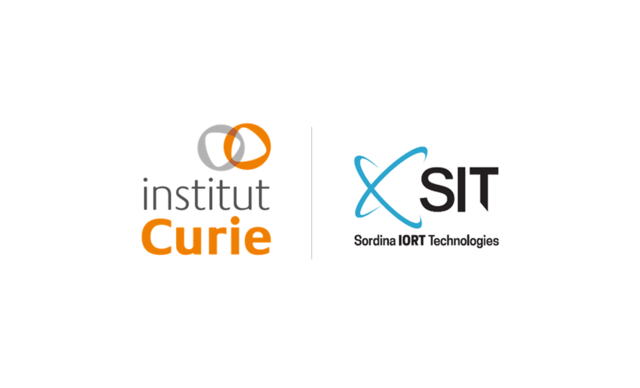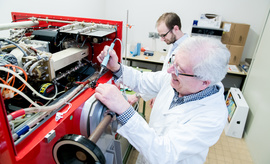“Flash" radiotherapy: another step towards clinical applications for Institut Curie and SIT

Radiotherapy is, along with surgery, the most effective technique for the treatment of solid tumors. In France, about 2 out of 3 people suffering from cancer are treated by radiotherapy during their illness. Although considerable progress has been made in the field in terms of imaging, ballistics and dosimetry, over the last few decades, the technologies used in electron accelerators and the methods of dose delivery have not changed much. However, over the past 7 years, the discovery of the Flash effect inside Institut Curie’s laboratories has led to a real paradigm shift in radiotherapy. Using very intense beams delivered in a very short time, this "Flash" technique (with ultra-high dose rate) destroys tumor cells in in vitro and preclinical models, while sparing healthy tissue and considerably reducing treatment times.
ElectronFlash: a unique and operational device set up at Institut Curie
Since 2019, Institut Curie researchers have been working closely with the company SIT, one of the few companies in the world, capable of designing, manufacturing and distributing miniaturized mobile electron linear accelerators for Intra Operative electron Radiation Therapy (IOeRT) and for FLASH Radiation Therapy systems. SIT, following Institut Curie specifications, designed and developed an experimental research platform (ElectronFlash) manufactured in Italy by SIT and now installed at Institut Curie site in Orsay, France. After the final phases of development and implementation, the ElectronFlash is now operational for the start of a series of new studies (in vitro and preclinical), which are essential before moving on to a clinical phase.
The technology deployed at the heart of our device is unique, extremely precise and very efficient. We have demonstrated that our research platform is operational and we are very enthusiastic about pursuing our work with SIT towards new phases that we hope will lead to clinical applications of Flash radiotherapy for patients. However, we will only be able to carry out our work successfully through collective and interdisciplinary work, involving researchers and teams of physicians, physicists, biologists and radiobiologists from Institut Curie hospital complex.
explains Marie Dutreix, head of DNA Repair, Radiations and Innovative Cancer Therapies Team at Institut Curie.
A step closer towards clinical applications
The partners will start their work by setting three objectives:
- Determine the optimal physical parameters of the device (dose rate, pulse structure...) to maximize the Flash effect.
- Demonstrate the anti-tumor effect of Flash radiotherapy on in vitro and preclinical models, and ensure the quality and safety of this treatment.
- Prepare the next clinical applications.
To do so, Marie Dutreix's team will analyze the fundamental biological parameters and molecular mechanisms underlying the Flash effect. They aim to understand what differentiates tumors and healthy tissues regarding the response to radiation, and what are the processes involved in Flash irradiation compared to conventional irradiation.
These studies might lead to the development of the next generation of electron accelerators, and could be used clinically, especially for intraoperative radiation therapy. Patients would benefit from a less heavy treatment, with potentially increased anti-tumor efficacy.
”We are proud and eager to partner with Institut Curie! The development of the research platform ElectronFlash has helped us in focusing, understanding and solving the huge challenges for the next Flash clinical device. It will be able to deliver the treatment as per the indications which Institut Curie will identify through its research," says Giuseppe Felici, SIT scientific director.
We are delighted with the signing of this partnership with the Italian company SIT, which will accelerate research and development work on a technology that could revolutionize conventional radiotherapy. With Flash technology, Institut Curie is reviving a century of innovation in radiotherapy, an expertise that goes back to the founding work of Pierre and Marie Curie.
concludes Amaury Martin, head of Institut Curie’s Technology Transfer Office and Institut Carnot Curie Cancer.




